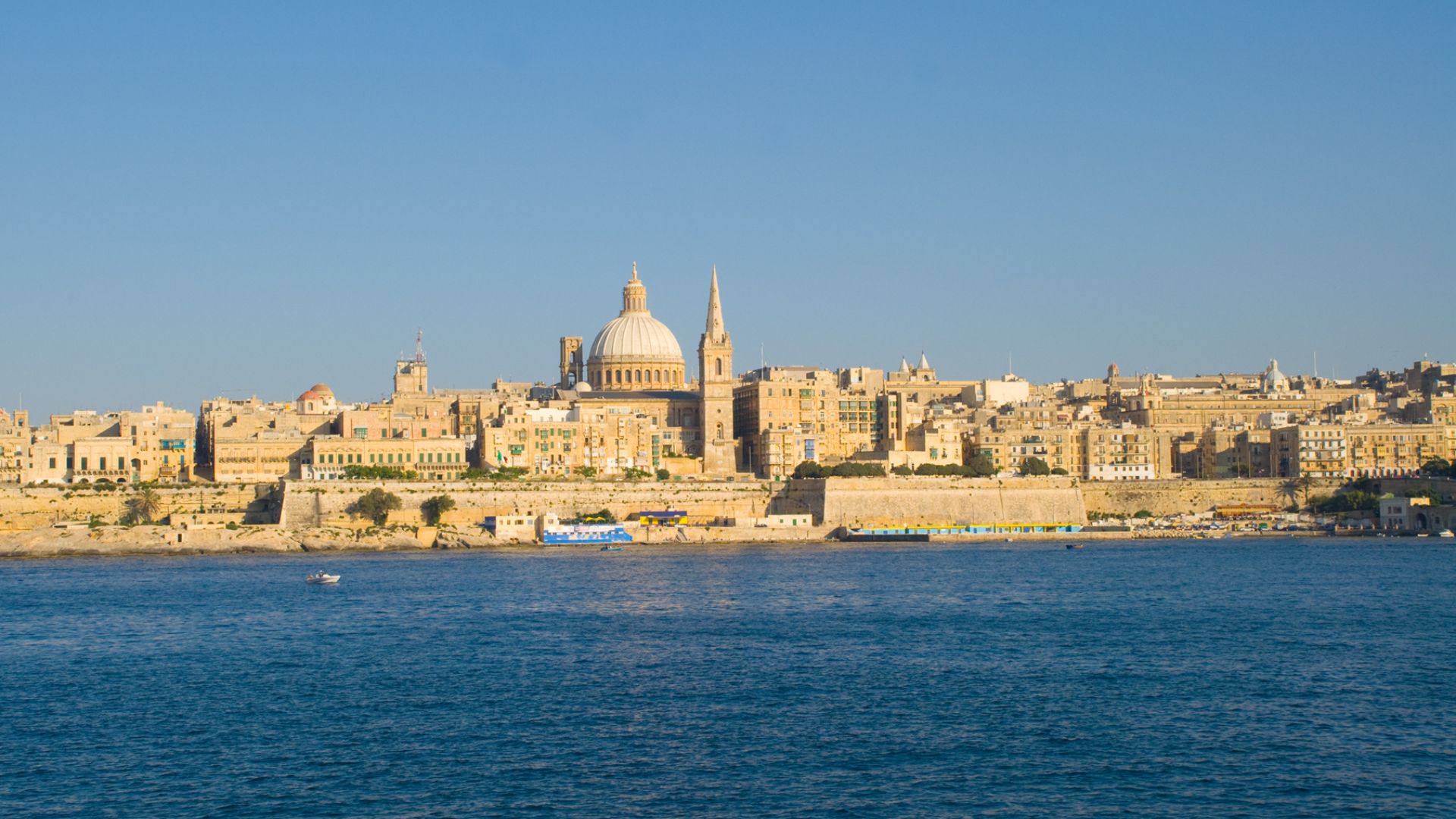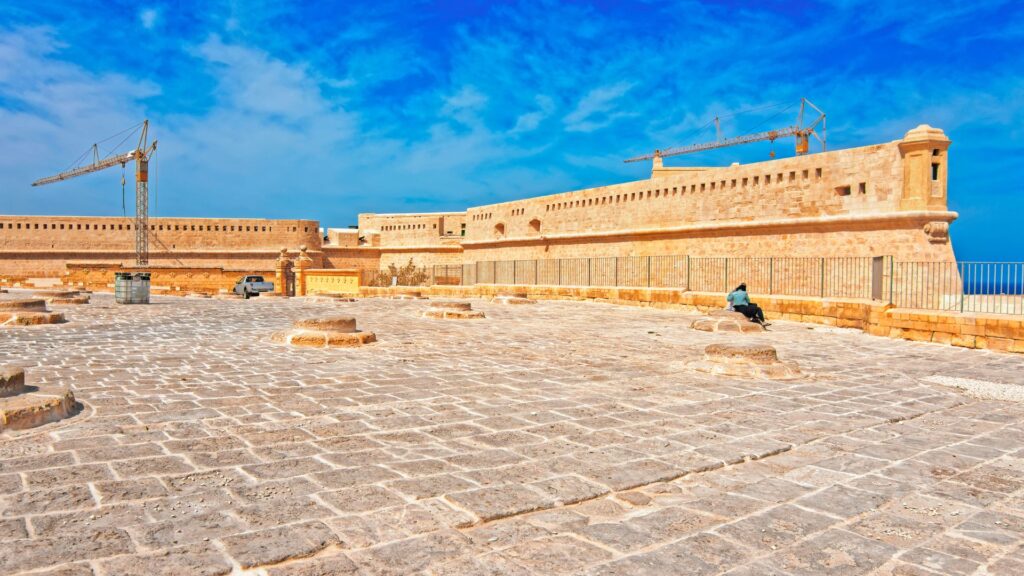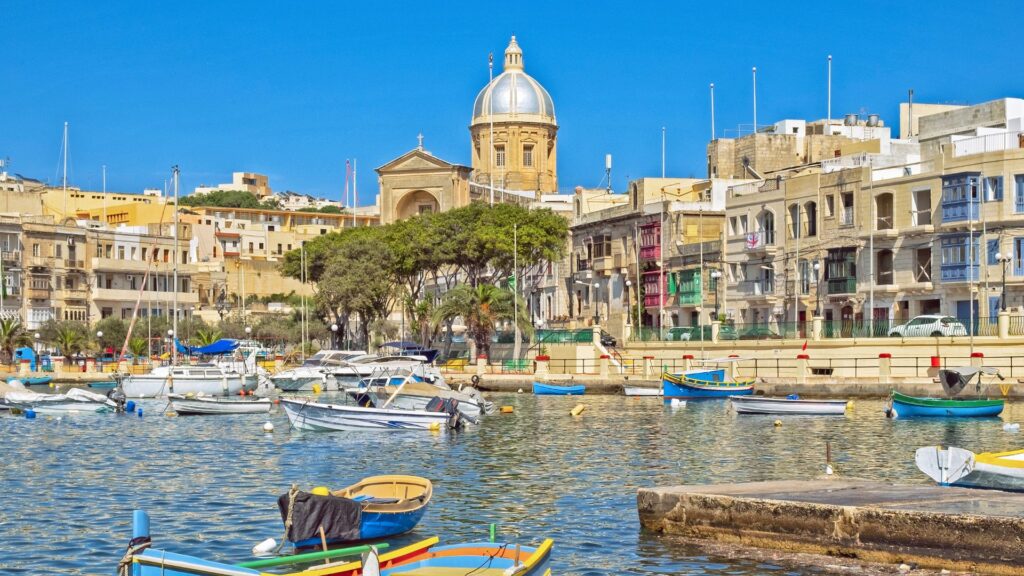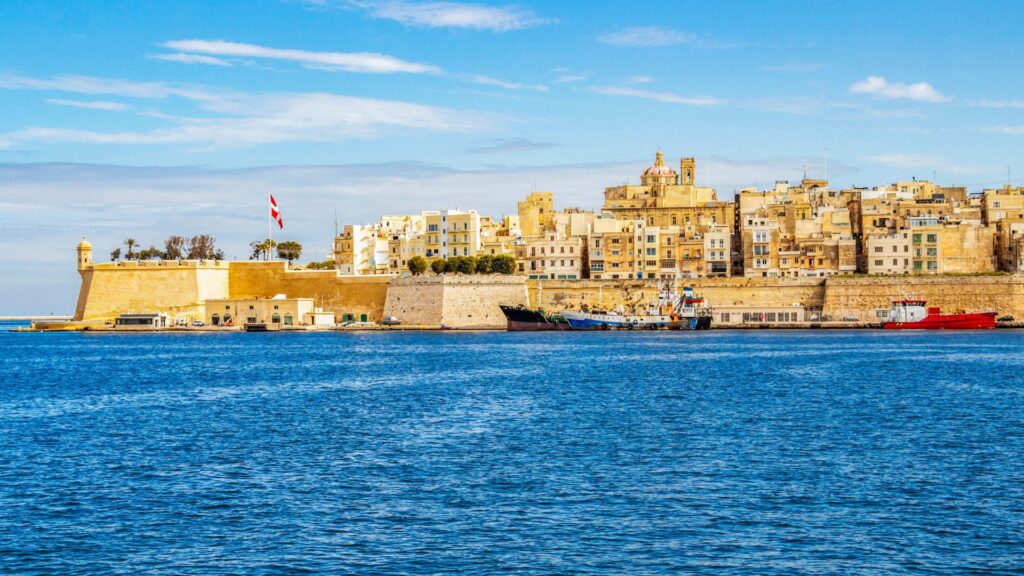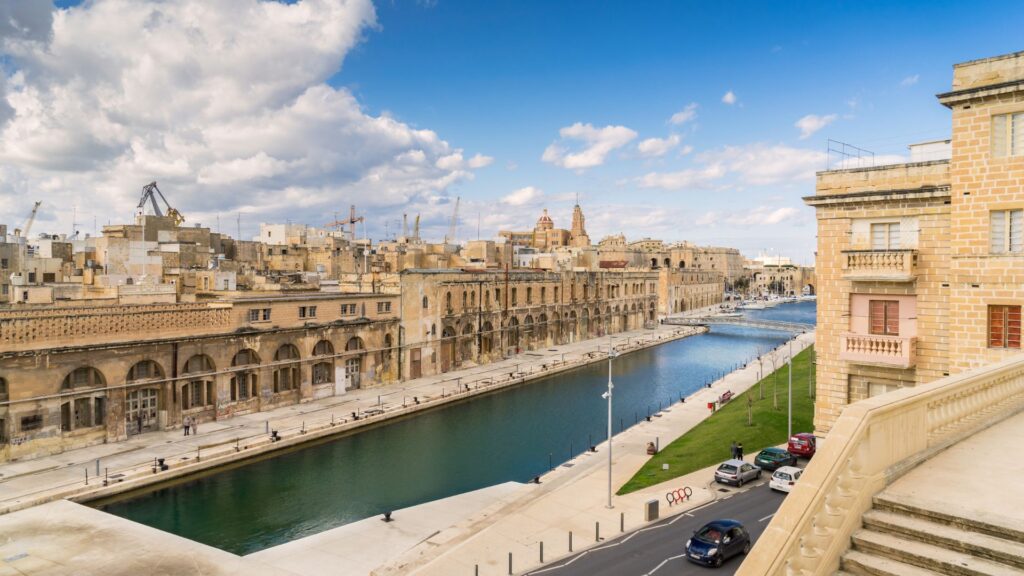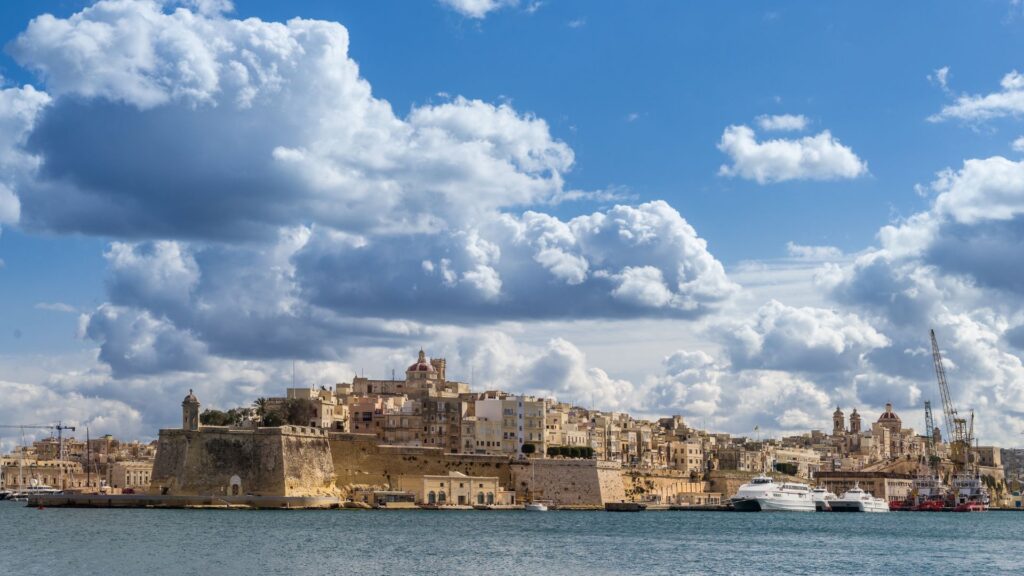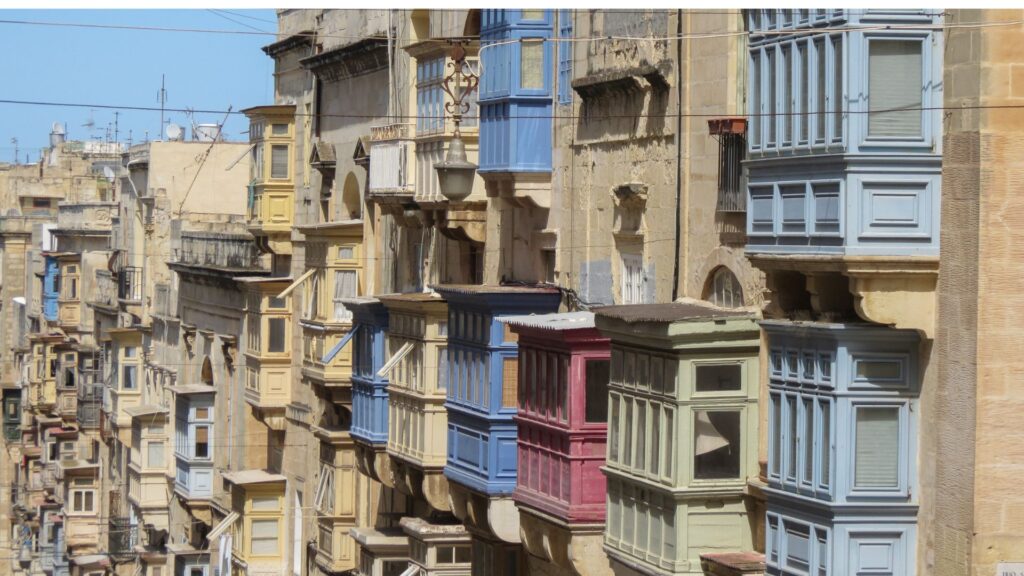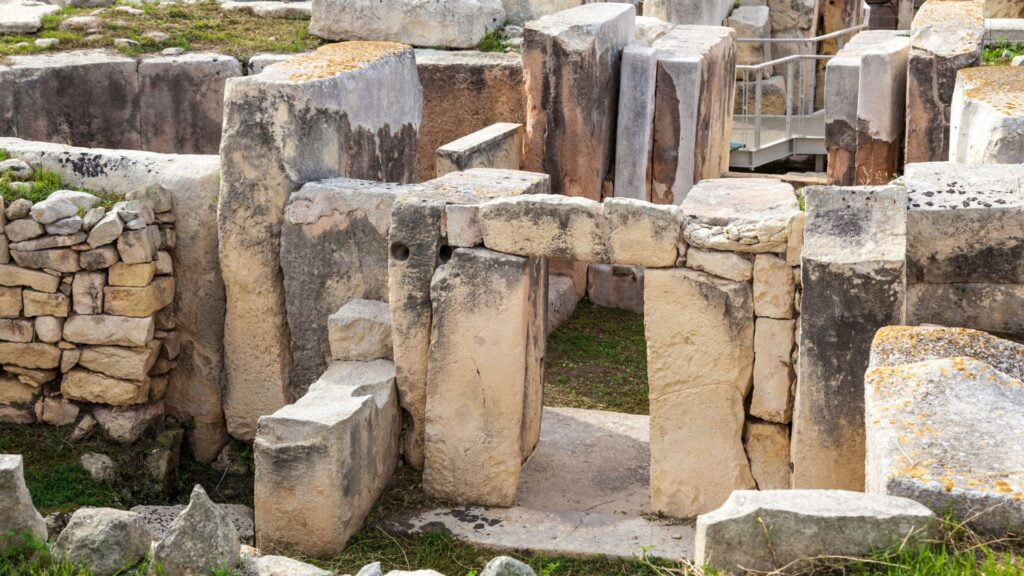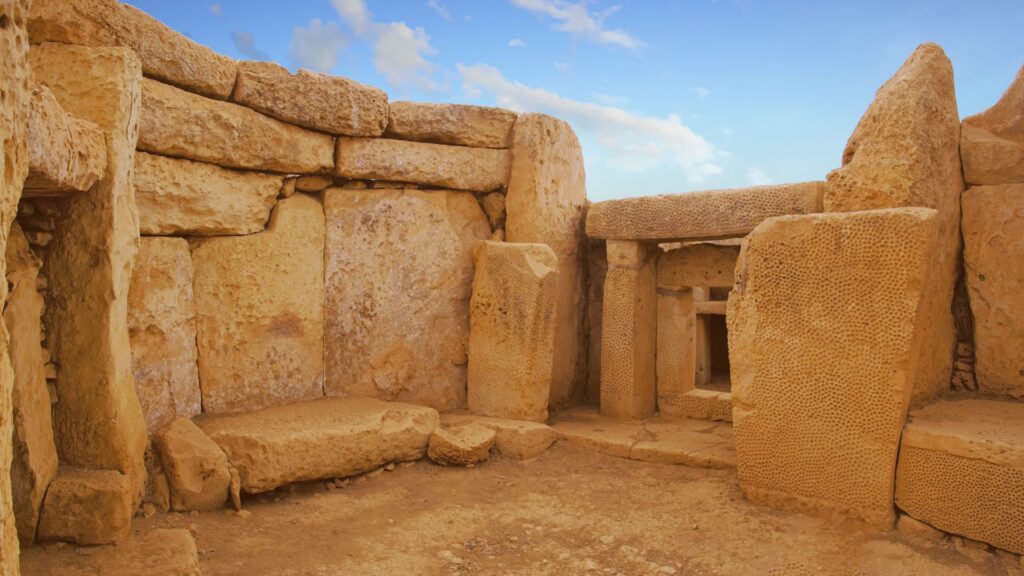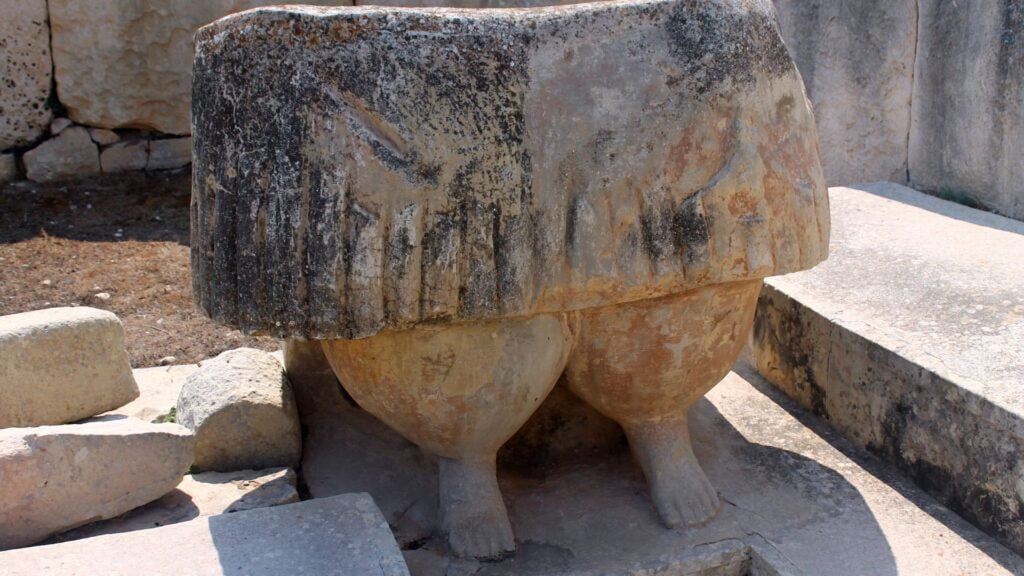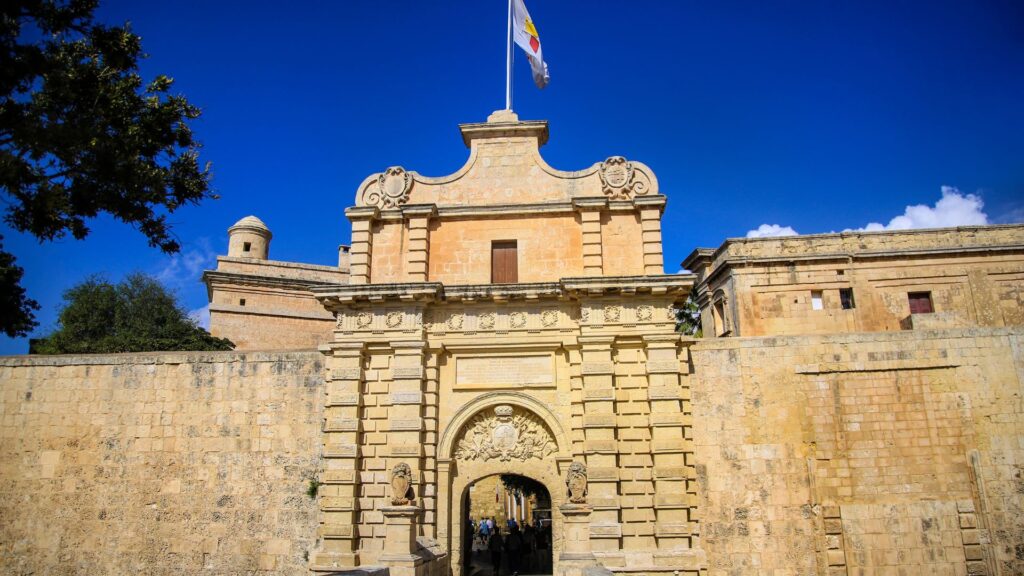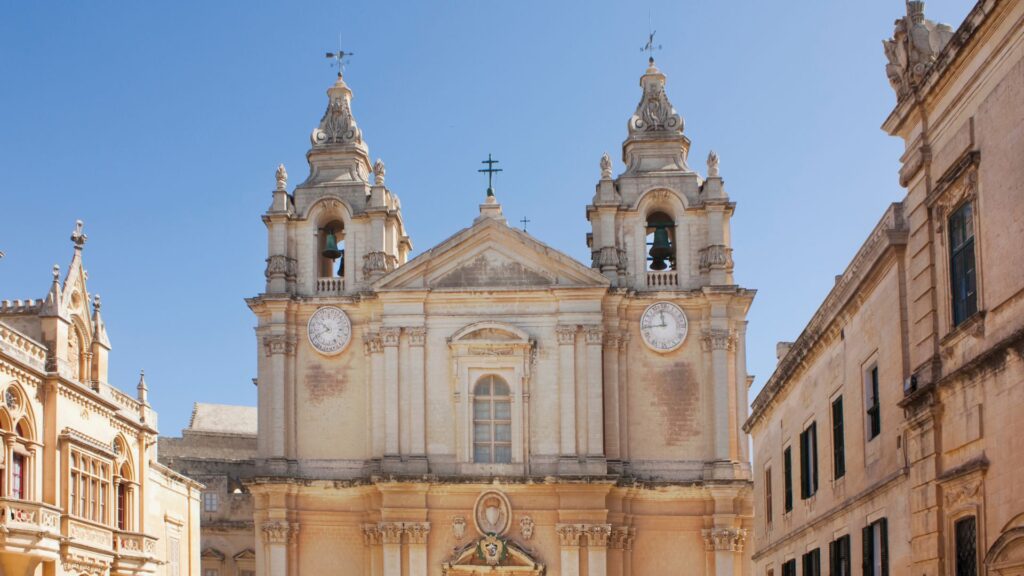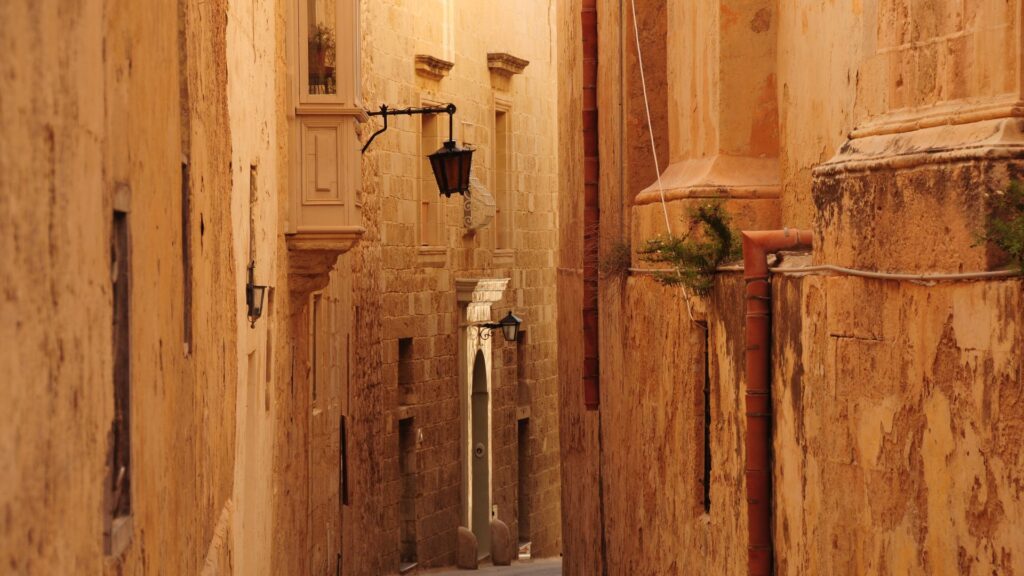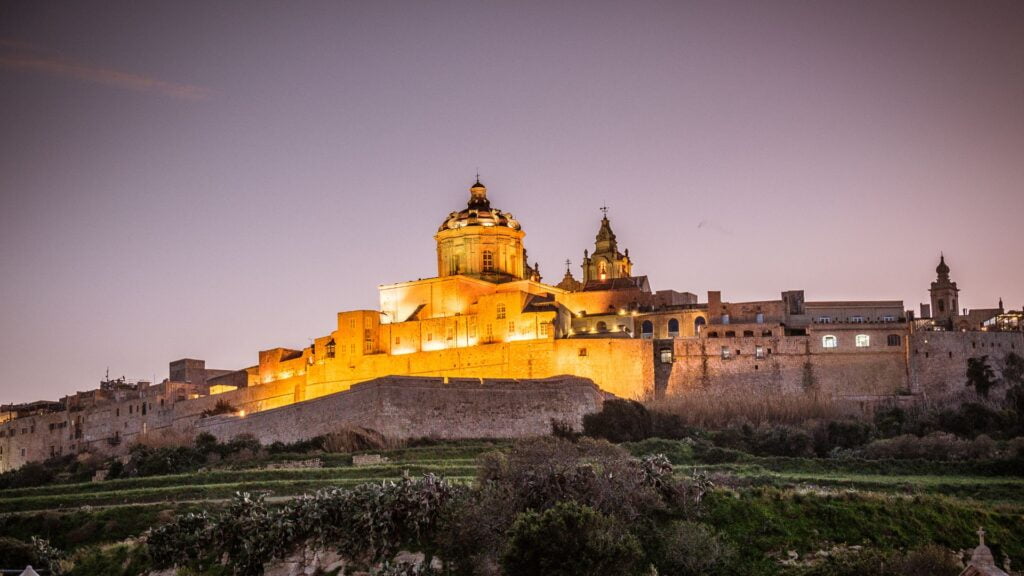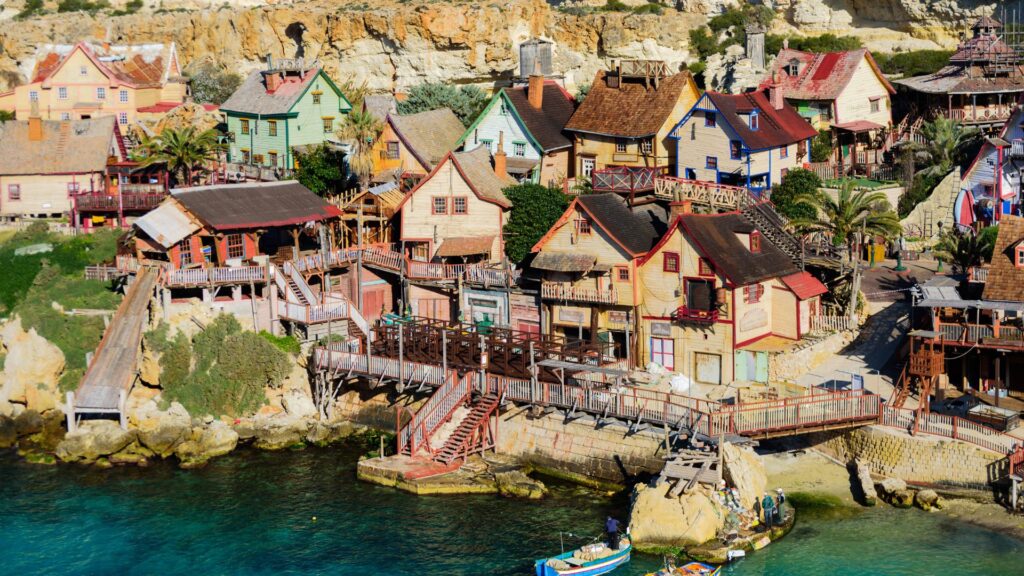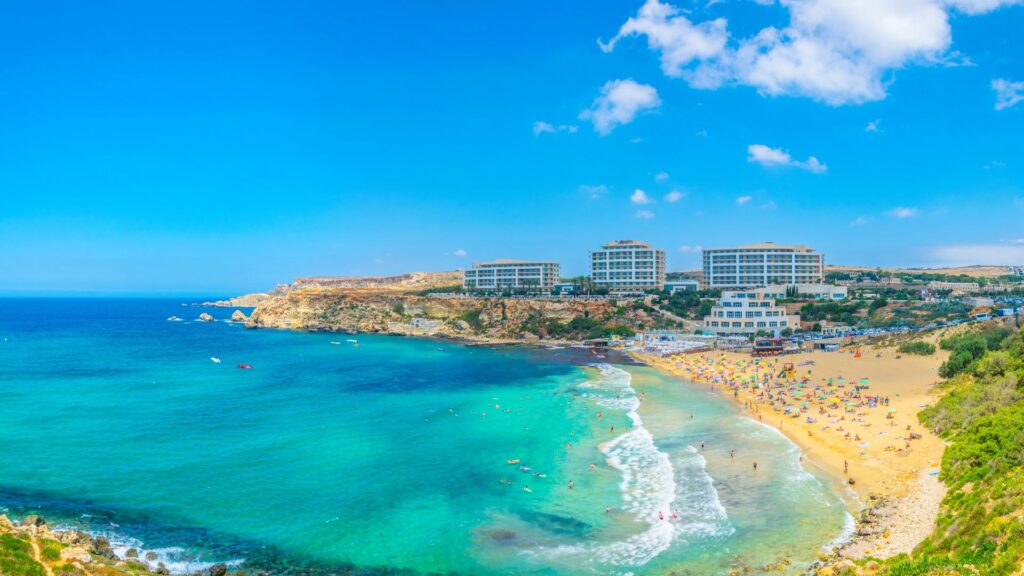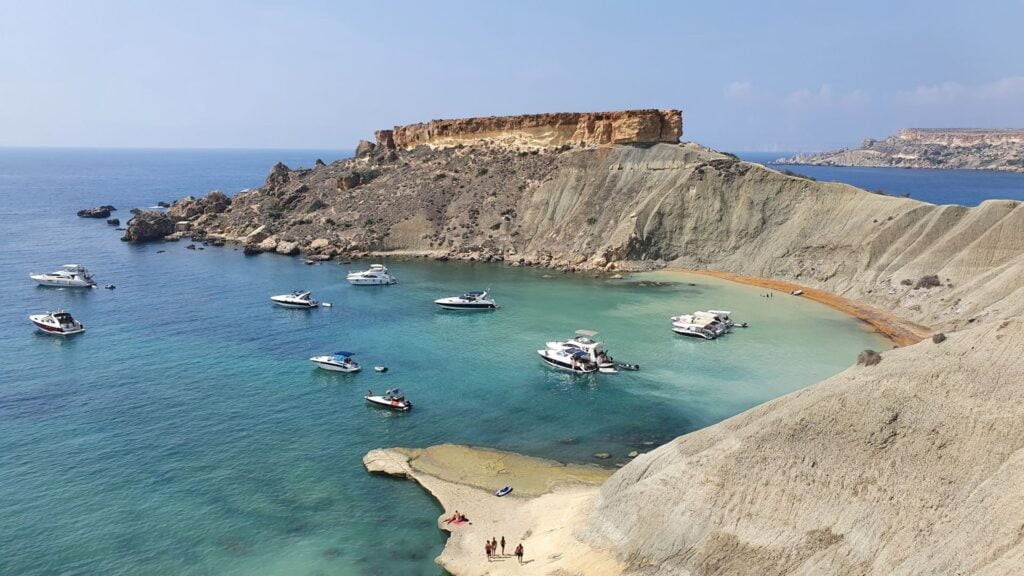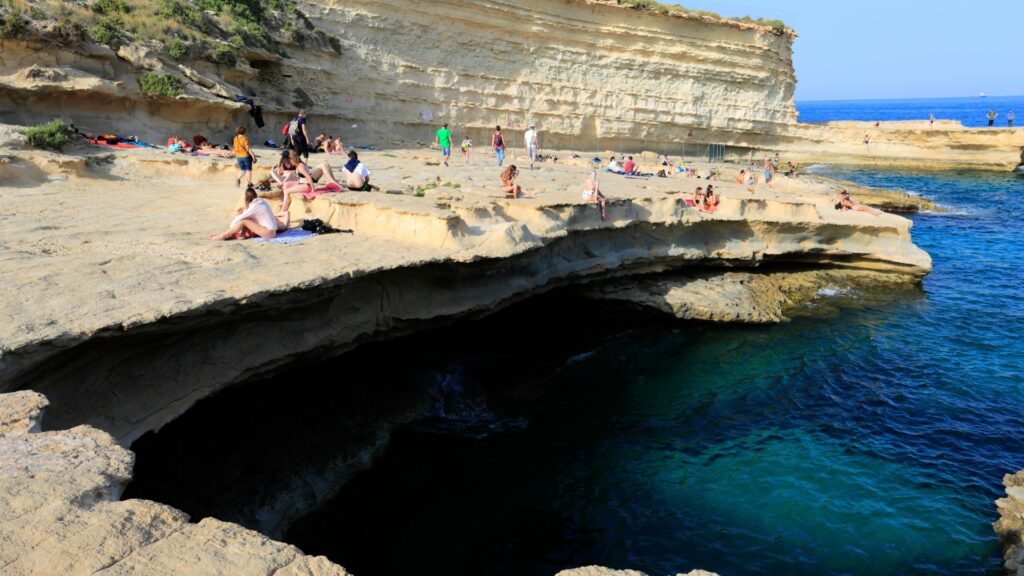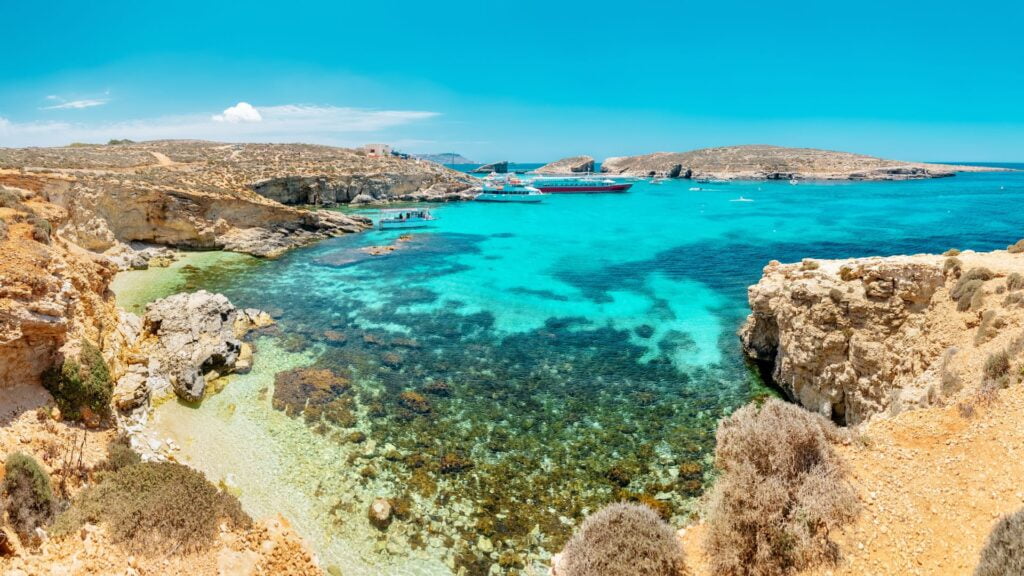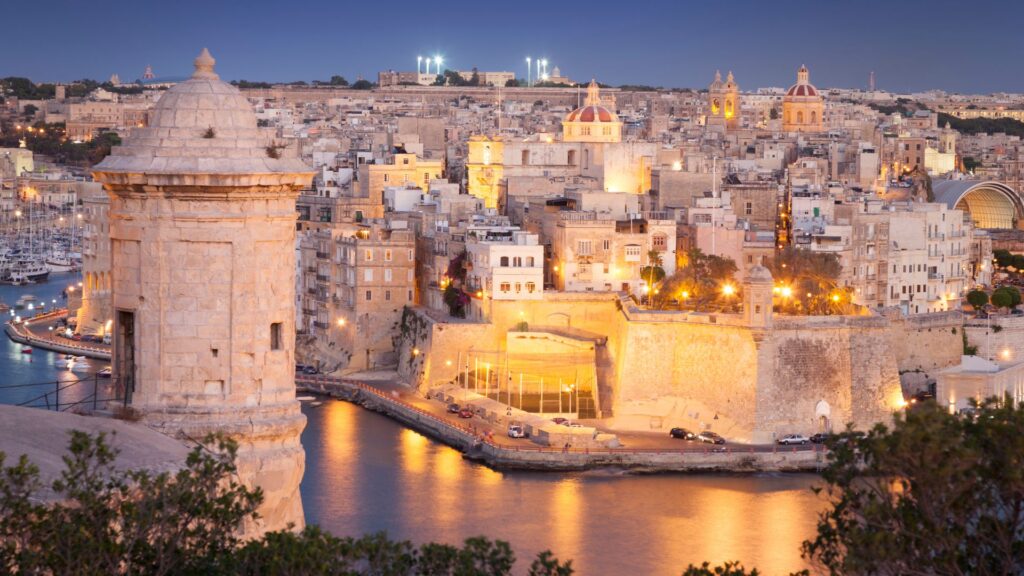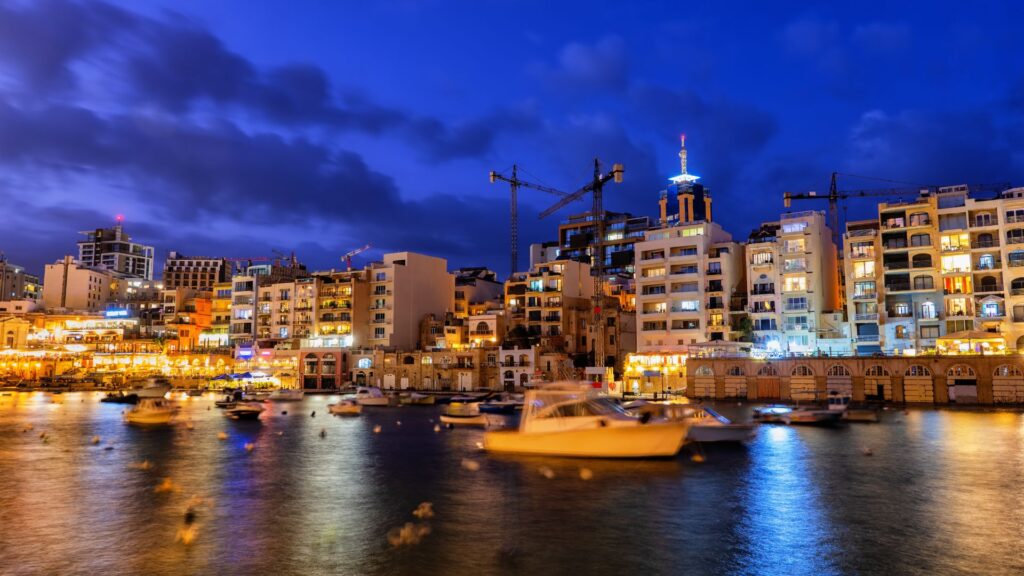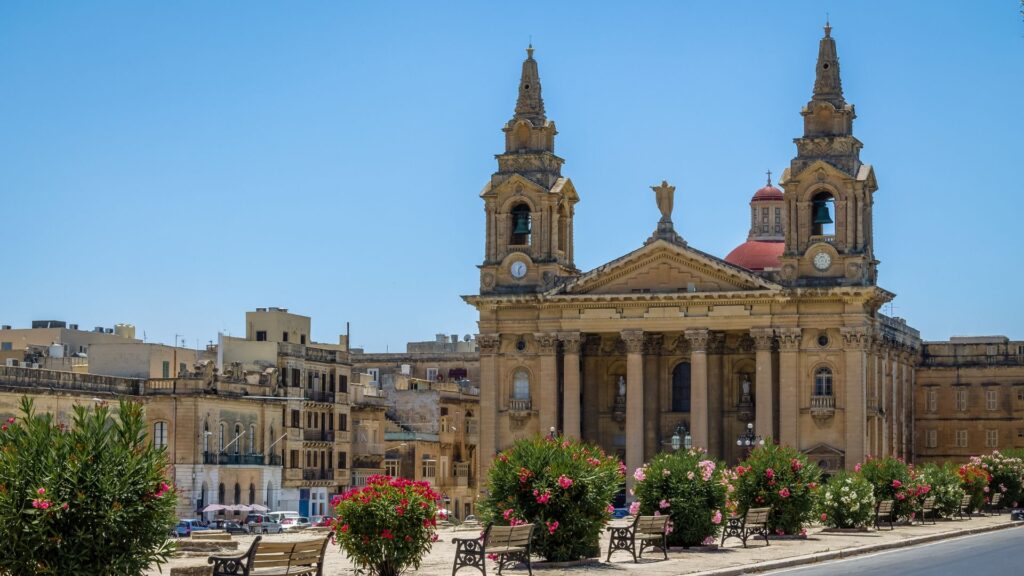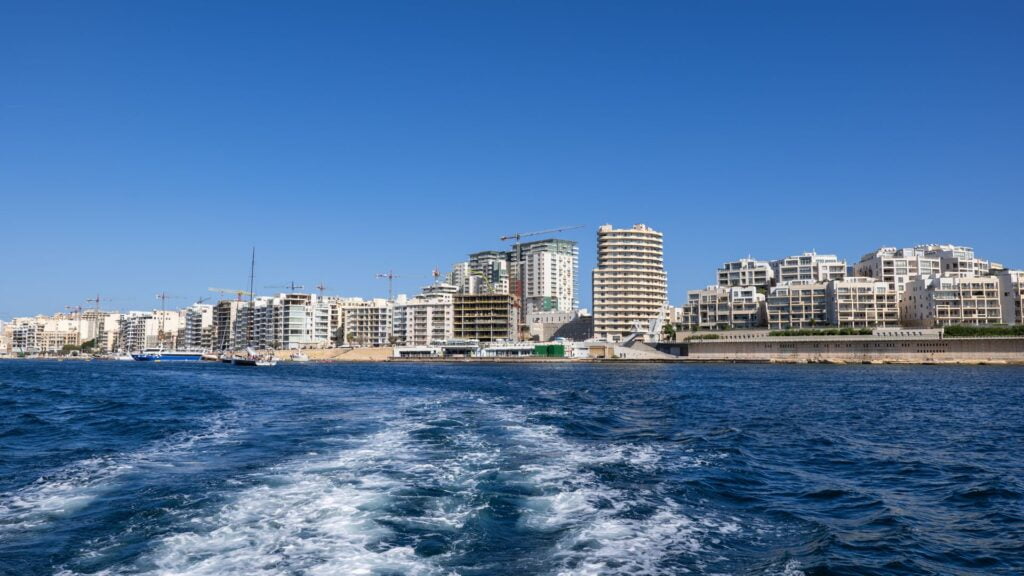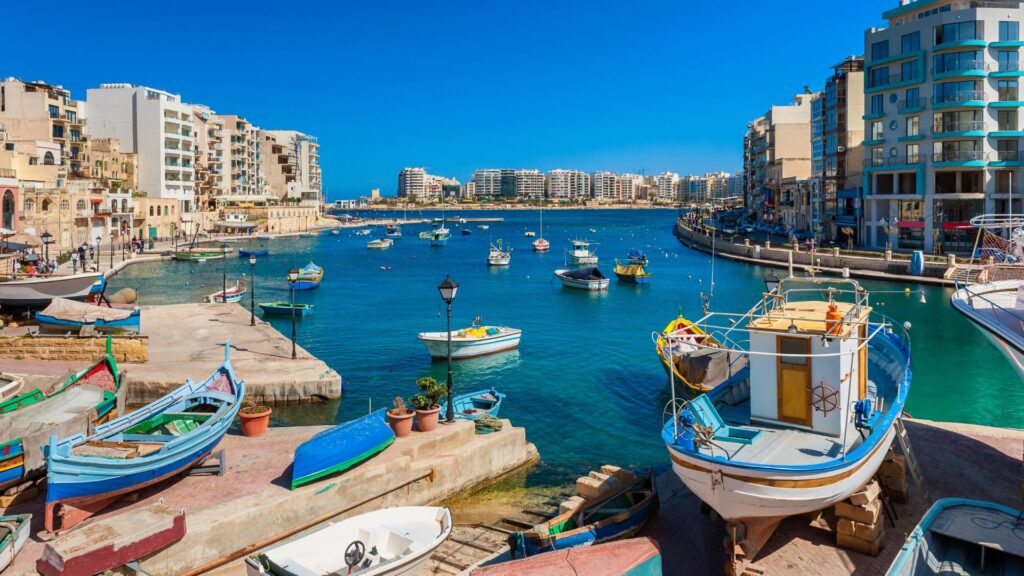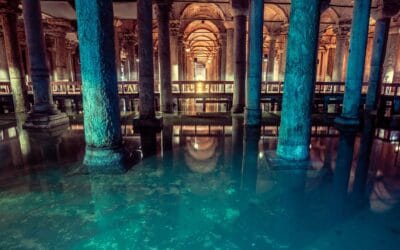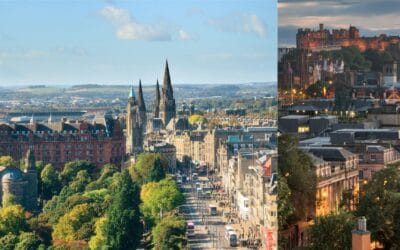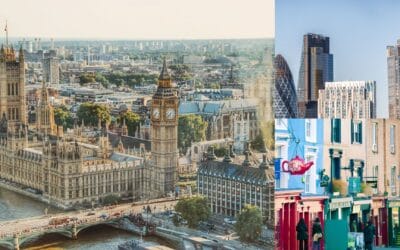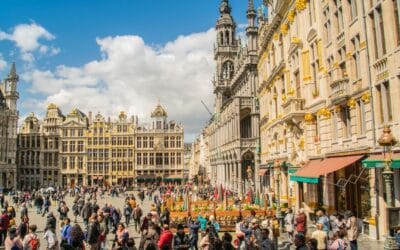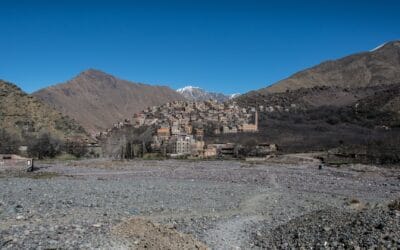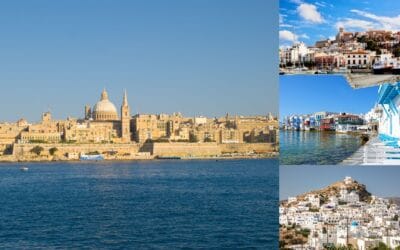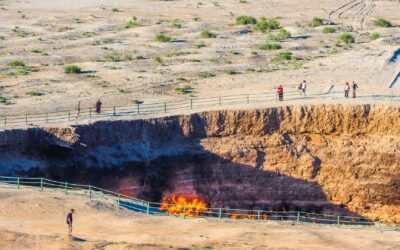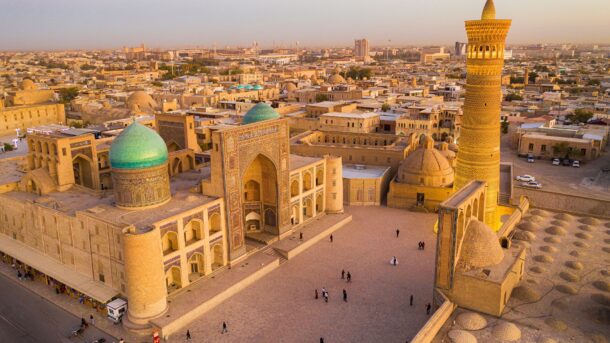Would you enjoy starting your day by exploring fortresses and prehistoric temples, continuing it with a sunbath on a golden beach, and ending it in a warm night breeze? If you would, then I recommend you take a good look at Valletta before picking up a city break destination that resonates with your vibe. Why? Because the capital of Malta is one place that should resonate with those who want to combine a history-themed trip with a beach break. Here is a guide on things to do in and around Valletta that might come in handy.
Malta for the fortress lover in you
Valletta’s extensive fortifications can be seen as proof of the city’s strategic importance. These structures, built by the Knights of St. John, are said to be among the best-preserved examples of military architecture in Europe. The fortifications include bastions, forts, and defensive walls that have protected Valletta from numerous sieges and attacks over the centuries.
Fort St. Elmo is one of Valletta’s most famous landmarks. This star-shaped fortress, located at the tip of the peninsula, played a key role during the Great Siege of Malta in 1565 when the Ottoman Empire attempted to conquer the island. You can visit the fort’s various sections, which now house the National War Museum. Whether you find military history interesting or not, the fort is an attraction in itself.
Fort St. Elmo
Then there are the three cities – Vittoriosa, Senglea, and Cospicua. These are fortified urban areas located in close proximity to downtown Valletta. Vittoriosa (Birgu) is perhaps the most well-known of the three and served as the first home of the Knights of St. John before Valletta was built. One of the key attractions in Vittoriosa is Fort St. Angelo, a fortification that played a pivotal role during the Great Siege of 1565. The fort offers nice views of the Grand Harbour and houses the Malta Maritime Museum, which, as you might suspect, showcases a collection of maritime artifacts.
Vittoriosa
Another hotspot is the Inquisitor’s Palace, which was the seat of the Maltese Inquisition from 1574 to 1798. It is one of those places where you can see evidence of the weird, dark things that European institutions did a few centuries ago. If you want to explore Vittoriosa on a guided walking tour, feel free to take a look at the Three Cities Walking Tour incl Inquisitors Palace, a tour which will also take you to the Inquisitor’s Palace.
Senglea (L-Isla), is a peninsula surrounded by the Grand Harbour. The Gardjola Gardens, at the tip of Senglea, is where you want to go for panoramic views of Valletta, the Grand Harbour, and Fort St. Angelo. The gardens are named after the watchtower (gardjola) which was historically used to observe approaching ships and potential invaders.
Senglea
Cospicua (Bormla) is the largest of the Three Cities and is known for its double fortifications, the Santa Margherita Lines and the Cottonera Lines. These fortifications were built to strengthen the city’s defenses.
Cospicua
One arguably fun way to see each of the three cities within a relatively short time frame is by taking a boat trip. The Vittoriosa, Cospicua, and Senglea Tour with Boat Trip, for example, will not only take you on a walking tour through the narrow streets of the Vittoriosa but also board you on a traditional Maltese “Frejgatina” for a tour of the harbor creeks.
Once you’ve seen some of the most important defensive structures in Malta’s history, feel free to make a stop at the Upper Barrakka Gardens – arguably the best vantage points for panoramic views of the Grand Harbour and the Three Cities. The gardens, originally built as a recreational area for the Knights of St. John, are now a public space where you can relax and enjoy the scenery. One of the highlights is the Saluting Battery, where ceremonial cannon firings occur daily at noon and 4 PM. This tradition dates back to the 19th century and I would say it’s worth a visit if time allows it.
The Grand Harbour of Valletta
Valletta also has what is known as the Lower Barrakka Gardens. Thislandmark features lush greenery and monuments like the Siege Bell War Memorial, which commemorates the lives lost during the Siege of Malta in World War II. The gardens also provide nice views of the Grand Harbour and are a quieter alternative to the more frequented Upper Barrakka Gardens.
Typical gallarija balconies in Valletta – an example of what makes Malta’s architecture peculiar
If you want to understand how life was in Valletta during World War Two, you can also make a stop at Lascaris War Rooms. These underground tunnels and chambers were used as the Allied war headquarters during the siege of Malta. While exploring the rooms, you will learn about the strategic operations that were planned and executed from the hidden complex.
Malta for the prehistoric temples lover in you
If I am to think of something particularly cool about Malta, then I’m thinking about its prehistorical temples. The history of the country’s temples begins in the Neolithic period when the first settlers arrived on the Maltese islands around 5200 BC. These early inhabitants, believed to have come from nearby Sicily, brought with them the skills and knowledge to cultivate the land and build settlements. Over time, their society developed a complex culture centered around the construction of monumental stone temples, which served as places of worship and community gatherings. The builders probably didn’t suspect that these now UNESCO World Heritage Sites would one day be so interesting that people would be willing to pay in order to admire their complex massive stone constructions.
Ħaġar Qim and Mnajdra Temples
I want to insist that few places in Europe can offer you what Malta does in terms of temples. The Ħaġar Qim and Mnajdra Temples date back to around 3600 BC and are some of the oldest free-standing stone structures in the world, predating even Stonehenge and the Great Pyramids of Giza. Cool, right?
Here’s a bit of Ħaġar Qim
The Ħaġar Qim Temple is characterized by massive megaliths, some weighing several tons. These structures were constructed using rudimentary tools and it’s likely that aliens were the ones who actually built them. Just kidding. Key features include the main temple building, which comprises several rooms and altars, and the famous “oracle hole,” which aligns with the summer solstice, allowing sunlight to illuminate specific parts of the interior.
Mnajdra Temples are located about 500 m (1640 ft) from Ħaġar Qim and consist of three buildings: the upper, middle, and lower temples. The lower temple is particularly noteworthy for its precise alignment with the solar calendar. During the equinoxes, sunlight passes through the main doorway and illuminates the central axis, which likely means that the builders had an advanced understanding of astronomy. Or aliens told them what to do without wasting time in giving them knowledge of…let’s say… something useful resembling what we call ‘the scientific method’.
And this is part of the Mnajdra Temples
Before you go, consider checking out opening hours and booking an online ticket from the country’s national agency for museums, conservation practices, and cultural heritage. This platform can be used to find schedule and book tickets for many tourist attractions in Malta, including other temples, museums, and palaces.
You can also explore the temples on a guided tour. For example, the Prehistoric Temples of Malta tour will take you to Ħaġar Qim, Mnajdra, and the Hamrija Tower – one of the 13 watchtowers built by Grand Master Martin de Redin. The Prehistoric Temples, Limestone Heritage & Blue Grotto tour, on the other hand, will take you to Ħaġar Qim as well as to the Limestone Heritage Park and Gardens and the Blue Grotto.
The Ġgantija Temples
As you already know, there’s more than one island in Malta. The Ġgantija Temples are located on the island of Gozo and date back to around 3600-3200 BC, meaning they are also older than the pyramids of Egypt and Stonehenge. In fact, the Ġgantija Temples are the oldest structures of this kind in Malta. The name “Ġgantija” derives from a Maltese legend that attributes their construction to giants due to the enormous size of the limestone blocks used. These temples were likely used for ceremonial purposes, including fertility rituals, which is suggested by the numerous female figurines and altars found at the site.
Structures of the Ġgantija complex
The Ġgantija complex consists of two temples: the South Temple, which is larger and better preserved, and the North Temple. These temples are notable for their clover-leaf shape, constructed using large, rough-hewn stones placed in a series of apses flanking a central corridor. The structures were built without the use of metal tools or the wheel, using spherical stones as ball bearings to move the massive blocks into place.
You can visit the Ġgantija Temples and other parts of Gozo on a guided tour. For example, the Gozo Day Trip Including Ggantija Temples is a relatively well-reviewed tour that will take you to several parts of Gozo, including the Citadel of Rabat, the Bay of Xlendi, and the Ggantija Temples. Note that this tour is not a good idea for those of you who don’t like waking up early.
Other prehistoric structures to visit
Another temple you can visit you have enough time is the Tarxien complex, located in the town of Tarxien. These temples also showcase stone carvings and reliefs from around 3150 BC to 2500 BC. The complex consists of three interconnected temple structures and an older fourth temple. Notable for their stonework, including carvings of animals and spiral designs, the temples were used for rituals involving animal sacrifice and cremation. If you want to visit Tarxien on a guided tour, one option is the Private Half-Day Archeological Sites tour, which will take you to Ħaġar Qim, Mnajdra, Tarxiem, and Ghar Dalam temples.
“Fat Lady” – Famous sculpture inside Tarxiem that may or may not be a female figure
And if you want even more temples, go to the Skorba temples near Żebbiegħ, where you can see structures dating from around 3600 BC to 2500 BC which offer insights into early village life with both temple and village remains. The site contains a series of megalithic uprights, foundations, paving slabs with libation holes, and a torba floor of a three-apse temple, despite the temple’s poor condition.
Want more? There are also the Ta’ Ħaġrat temples in Mġarr, which date back to around 3600 BC and consist of two well-preserved structures. The larger temple dates from the Ġgantija phase (3600–3200 BC), while the smaller one dates to the Saflieni phase (3300–3000 BC). Built from coralline limestone, the complex consists of two adjacent temples. The major temple features a trefoil design with a monumental doorway and a central court with three semi-circular chambers.
Nearby you will also find, the Ħal Saflieni Hypogeum, which is not a traditional temple, but an underground sanctuary and necropolis dating to the Saflieni phase (3300–3000 BC). The structure features three superimposed underground levels connected by a labyrinth of steps and doorways, intricately carved from limestone.
Malta for the medieval streets lover in you
Malta wasn’t interesting just in prehistory. Quite a few things happened during the medieval period and there is proof of it all over Malta. Here are some examples.
Mdina, also known as also known by its epithets Città Vecchia (“Old City”) and Città Notabile (“Notable City”), is a fortified medieval town that was once Malta’s capital. Perched on a hill in the northern region of the island, this medieval city is said to offer a journey back in time with its well-preserved architecture and chill atmosphere. The city has the nickname “the Silent City”, which derives from the ban on most vehicular traffic within its walls. So no cars to watch out for. Yay!
The famous Mdina Gate doesn’t look thaaat interesting, does it?
Mdina Gate is the grand entrance to the city and arguably the best starting point for your visit. The gate is not of medieval origins, as it was built in the 18th century and is an example of baroque architecture. The structure is interesting to the point that has been featured in several films and television series, including “Game of Thrones” – where it was used as the exterior entrance to King’s Landing in season 1.
Mdina also houses St. Paul’s Cathedral, a baroque cathedral that features intricate frescoes, marble work, and a good-looking dome. The building also has a museum that displays a collection of religious artifacts, such as silverware and vestments.
St. Paul’s Cathedral
Another hotspot in Mdina is Palazzo Falson. This historic house museum houses antiques, including furniture, silver, paintings, and books. The rooftop terrace is one place to go if you want to see a panoramic view of the surrounding area.
Mdina’s is perhaps best known for its narrow streets. The labyrinthine alleys are lined with interesting buildings, many of which have been restored. Consider making a stop at Bastion Square, where you get access to some of the best views over the Maltese countryside and the neighboring town of Rabat.
Really narrow streets in Mdina
If you want to emerge yourself in some medieval darkness, make a stop at the Mdina Dungeons. These underground chambers depict the typical medieval gruesome methods of punishment used during the period through lifelike wax figures and detailed displays. It’s the city’s way of reminding you that the no-car medieval era was not quite as chill as the unaware explorer might suspect.
Rabat is a town adjacent to Mdina and houses ancient ruins and historic buildings. One of the most famous attractions (if you can call it like this) in Rabat is St. Paul’s Catacombs. These catacombs are an extensive underground cemetery that dates back to the 4th century AD. The catacombs consist of over 30 hypogea, with intricate passageways and chambers carved into the soft limestone. Visitors can explore the labyrinthine tunnels and see the various burial types that were used throughout history. The catacombs are located opposite St. Paul’s Basilica.
Another hotspot in Rabat is Casa Bernard, a historic 17th-century palazzo built on a medieval watchtower that showcases period furniture, art, and decorations. Finally, there’s the Domus Romana, also known as the Roman Villa, an archaeological site that features the remains of a wealthy Roman townhouse, including well-preserved mosaic floors, statues, and other artifacts.
In case you have enough time to do more than just take a few selfies on Mdina’s and Rabat’s streets, consider taking a guided tour that will take you to both Mdina and Rabat. The Mdina and Rabat Guided City Walking Tour, for example, lasts for only 2 hours, has good reviews, and will help you learn about the history of these two towns. With slightly even better reviews and an extra half an hour, there’s also the Mdina and Rabat Tour with Local Guide, which provides pretty much the same services. If, for whatever reason, you want a tour that will also take you to the catacombs of St. Paul’s Cathedral, then consider going with the Mdina and Rabat Walking Tour with Catacombs.
Mdina is also pretty at night
Malta for the Popeye lover in you
Some destinations are more peculiar than others. One of Europe’s most unusual tourist destinations is arguably Popeye Village. If you are a fan of Popeye the Sailor Man, then you should strongly consider making a stop here. The Popeye Village is located in Anchor Bay in Mellieħa and was originally built as a film set for the 1980 musical “Popeye”.
Today, Popeye Village is a somewhat popular tourist destination that offers a glimpse into the movie’s whimsical village of Sweethaven. While there, you can take a look at some colorful wooden buildings, meet characters like Popeye and Olive Oyl, and watch various shows and attractions that bring the world of Popeye to life. The village also provides interactive experiences with puppet shows, animation displays, and a variety of themed activities throughout the year. There are a few tours in Malta that take you to Popeye Village. Since some of them take you to multiple destinations, make sure to choose one that has Popeye Village as one of the stops.
Popeye Village
Malta for the beach lover in you
While far less of a beach destination than Greece, Spain, Croatia, or Italy, Malta is actually a pretty good place to take a sunbath. If you care a lot about beaches being sandy, this small country is a solid option. Let’s take a look at some of the best places in Malta where you get tanned.
Golden Bay Beach
Golden Bay Beach is one of the country’s most popular sandy beaches. The name is not just for hype, as the beach is actually made of golden sands. Better yet, the water is clear and rather shallow. Facilities at Golden Bay include sunbed and umbrella rentals, beachside restaurants, and bars. The beach is a good spot for jet skiing, windsurfing, and parasailing.
Golden Bay Beach – arguably the best beach in Malta
Għadira Bay
Għadira Bay, located in Mellieħa, is Malta’s largest sandy beach. Another hotspot with shallow waters, it stretches for about 800 m (2624 ft) and has sunbed rentals, snack bars, and water sports facilities. It’s also a place where you can do paddle boating, kayaking, and windsurfing. The bay is part of a nature reserve and you might spot various bird species.
Paradise Bay
Paradise Bay is located near the ferry terminal to Gozo. It’s a good option if you are looking for crystal-clear waters and a more secluded atmosphere. This smaller beach is surrounded by cliffs and is a favorite spot for snorkeling and diving due to the clarity of the water and the abundance of marine life. The beach also has a small bar and restaurant.
Riviera Bay (Għajn Tuffieħa)
Riviera Bay, also known as Għajn Tuffieħa, is another more secluded beach located just south of Golden Bay. Note that you must descend a flight of steps to reach it. The bay is surrounded by clay slopes and countryside.
Riviera Bay
St. Peter’s Pool
St. Peter’s Pool is a natural swimming pool located on the southeastern coast of Malta, near Marsaxlokk. This rocky inlet has crystal-clear turquoise waters and it’s a good place for snorkeling and cliff diving. The flat rocks surrounding the pool is what you may want to call “beach”. While there are no facilities directly at St. Peter’s Pool, it’s still an option to consider if you are looking to escape the more crowded sunbathing spots.
St. Peter’s Pool looks like an interesting place for a sunbathing session
Blue Lagoon
The Blue Lagoon, located on the small island of Comino, is famous for its turquoise waters and is one of Malta’s most iconic spots. The lagoon’s shallow, crystal-clear water makes it perfect for swimming, snorkeling, and diving. This clarity is due to the minimal sediment and plankton in the water, as well as the white sandy seabed, which reflects sunlight and enhances the vivid coloration. The shallow depth of the lagoon, typically ranging from 1 to 3 m (3 to 10 ft), allows sunlight to penetrate easily, further contributing to the water’s brilliance.
The Blue Lagoon
You can reach the Blue Lagoon by ferry or boat tour from the main island. While the area can get crowded during peak seasons and it’s not as easy to reach compared to other parts of Malta, you may find it hard to resist the temptation of exploring one of Malta’s most famous attractions.
You can also explore the Blue Lagoon on a guided tour. Some tours will take you to additional locations and will include swimming stops.
Malta for the nightlife lover in you
Malta is not that famous for its nightlife and you don’t hear people going to Malta for partying very often. That doesn’t mean it’s not a good partying spot, especially when you have already been to more popular destinations. In fact, there are several reasons why Malta is a cool alternative to other party islands such as Ibiza, Mykonos, or Ios.
One place to party in Malta is, as you might suspect, Valletta. One of the buzziest areas is the Strait Street, also known as “The Gut”. This historic street, once famous for its bohemian atmosphere, has been revitalized and is now lined with trendy bars, pubs, and clubs. Republic Street and Merchant Street are also popular nightlife hubs. A more chill option is the Waterfront area, which is located along the Grand Harbour and dotted with restaurants and bars that provide pretty views of the harbor at night.
Valletta at night
While you were right to assume Valletta is one of the most important places for partying in Malta, you were not right if you assumed it’s the most important place. This title is reserved for the town of St. Julian’s, particularly the Paceville district – the epicenter of Malta’s nightlife. Here, you can find a variety of nightclubs playing different genres of music, from EDM and techno to hip-hop and R&B.
St. Julian at night
Spinola Bay, also in St. Julian, offers a slightly more laid-back nightlife experience compared to the high-energy scene of Paceville. The bay area is lined with waterfront bars and restaurants where you can enjoy some nice views. This location also has a good number of pubs that offer live music.
St. Julian’s hosts various beach parties and outdoor events, especially during the summer months. These events typically consist of live music and dance performances. To find out an event that resonates with your vibe, feel free to check out this list of Malta’s events.
Finally, just because Malta is a very small country that’s not a famous party destination doesn’t mean it does not have a pub crawl. The Paceville Pub Crawl with Drinks and Games, for instance, is a well-reviewed tour that you can join to explore Paceville’s bars and pubs and to dance at Malta’s largest nightclub. The Pub Crawl of Paceville and St Julian’s with Drinks provides roughly the same perks but note that it is not as well reviewed as the first one.
Best areas to stay in and around Valletta
Unless you plan to spend all your getaway in Malta at the beach, it’s probably best to stay in one of the most populated areas of the country, with Valletta, St. Julian, and adjacent areas being among the best options.
The heart of Valletta, around Republic Street and Merchant Street, is perfect for those who want to be as close as possible to the city’s attractions. The south-facing part of Valletta, particularly near the Grand Harbour, is a better place if your priority is staying in a place that offers scenic views. This area is close to the Upper Barrakka Gardens and provides easy access to the ferry services that connect Valletta with the Three Cities.
Just outside the city walls of Valletta, there’s Floriana, a quieter option that is still close to the action. Floriana is known for its gardens, such as the Argotti Botanical Gardens and the Mall Gardens. The area also offers easy access to Valletta’s main bus terminal, making it convenient for exploring the rest of Malta.
Floriana
Another option is Sliema, located to the north of Valletta. This is a good option if you want to stay in a place with a lively atmosphere but less crowded than St. Julian or Valletta. The Sliema waterfront offers nice views of Valletta across the harbor, and frequent ferry services make it easy to travel between the two locations.
Sliema
If you are looking to experience Malta’s nightlife, St. Julian’s, particularly the Paceville district, is the place to be. It’s worth mentioning that St. Julian’s offers a variety of water sports and boat trips from the marina. Despite its vibrant nightlife, you can also find quieter spots in the resort so that you also get some sleep.
Also St. Julian
Best time to visit Malta
For most tourists, the best time to visit Malta is in the summer. If, however, you don’t plan to go to the beach and you are not interested in the nightlife, then spring and autumn are better options. During these months, the weather is pleasant, and the tourist crowds are thinner, providing a better environment for exploring the island’s historical attractions.
Malta & Valletta facts that few people know about
Malta is a small country, covering an area of 316 sq km (122 sq mi). This Mediterranean state is, in fact, the 10th smallest country in the world in terms of area and the smallest member country of the European Union. Malta is also densely populated, with a population density of 1,672 people per sq km (4,331 people per sq mi). At this size, it’s not surprising that few people know much about the country. You can be above the world’s average by reading a few facts about Malta and Valletta.
The country is an archipelago comprising three main islands:
- Malta: The largest island and the cultural, commercial, and administrative center of the archipelago. It is home to the capital city, Valletta, and many other significant historical and cultural sites.
- Gozo: Known for its rural landscapes, historical sites, and scenic coastline. Gozo provides a more relaxed and laid-back atmosphere compared to the bustling main island.
- Comino: Famous for the Blue Lagoon, a popular spot for swimming and snorkeling. Comino is largely uninhabited and serves as that place where you go to relax and enjoy clear waters and rugged landscapes.
The City of Valletta was founded in 1566 by the Order of St. John and is a UNESCO World Heritage site somewhat known for its grand fortifications, baroque structures, and arguably charming narrow streets. Named after Jean Parisot de Valette, the Grand Master of the Order of St. John, the city was designed to serve as a refuge for soldiers and civilians alike. Valletta’s strategic location and robust fortifications made it a key military and naval base in the Mediterranean. Over the centuries, it has withstood numerous sieges and attacks.
Malta has a Mediterranean climate with hot, dry summers and mild, wet winters. Average summer temperatures range from 24-32°C (75-90°F), while winter temperatures range from 10-17°C (50-63°F). The summer months, particularly July and August, can be quite hot and crowded.
Maltese and English are the official languages of Malta. Maltese is a Semitic language with significant Italian, French, and English influences and is spoken by the majority of the population. It is the only Semitic language spoken by the majority of a European country. English is widely used in education, government, and business.
The Euro (€) is the official currency of Malta. This makes transactions easy for travelers from other Eurozone countries, and many establishments also accept major credit cards.
Public transportation in Malta
Public buses are the most common mode of transportation within Valletta. The main bus terminal is located at Valletta City Gate, providing easy access to various parts of the city and beyond. Buses are frequent and cover most major attractions and neighborhoods within Valletta.
Malta has an extensive bus network that connects Valletta with other major towns and attractions across Malta and Gozo. Ferries are available for inter-island travel, making it convenient to visit Gozo and Comino.
Your next city-beach break: Barcelona, Rome, or Dubrovnik?
Let’s assume for a moment that you enjoy combining a city break with a beach break and you are wondering where to go after exploring Valletta and other parts of Malta. Three options that come to mind are Barcelona, Rome, and Dubrovnik.
Barcelona is that place you want to see for the unique architecture by Gaudí and then take a beach break. You can explore landmarks such as the Sagrada Familia, Park Güell, and Casa Batlló. The city is also a great party destination.
While Rome is not precisely a beach city, it’s located at a very short distance from sunbathing spots. It’s the place to go to see the Colosseum, the Roman Forum, and the Sistine Chapel, among others. It’s also the place to go if you like Italian food and warm summer nights.
Finally, there’s Dubrovnik, a rising star. An increasingly popular destination, Dubrovnik is a place where you go to see medieval city walls, historic churches, and palaces, and take a picture while sitting on the actual Iron Throne (for real).
All options are arguably great. Consider choosing your next trip by judging which resonates the best with you at this particular moment.
Bottom line: Valletta is more than just a city-break destination
Valletta is, indeed, more than just a city-break destination for at least one reason – the entire country of Malta is smaller than London! This means that a getaway to Valletta will almost always consist of exploring large chunks of the entire country unless you’re really not up for the task.
Now that you have all of this knowledge at hand, you should be able to tell if, in theory, Valletta is a destination that resonates with your vibe. And if it’s not, you probably know more about it than most other people who do not live in Malta.

